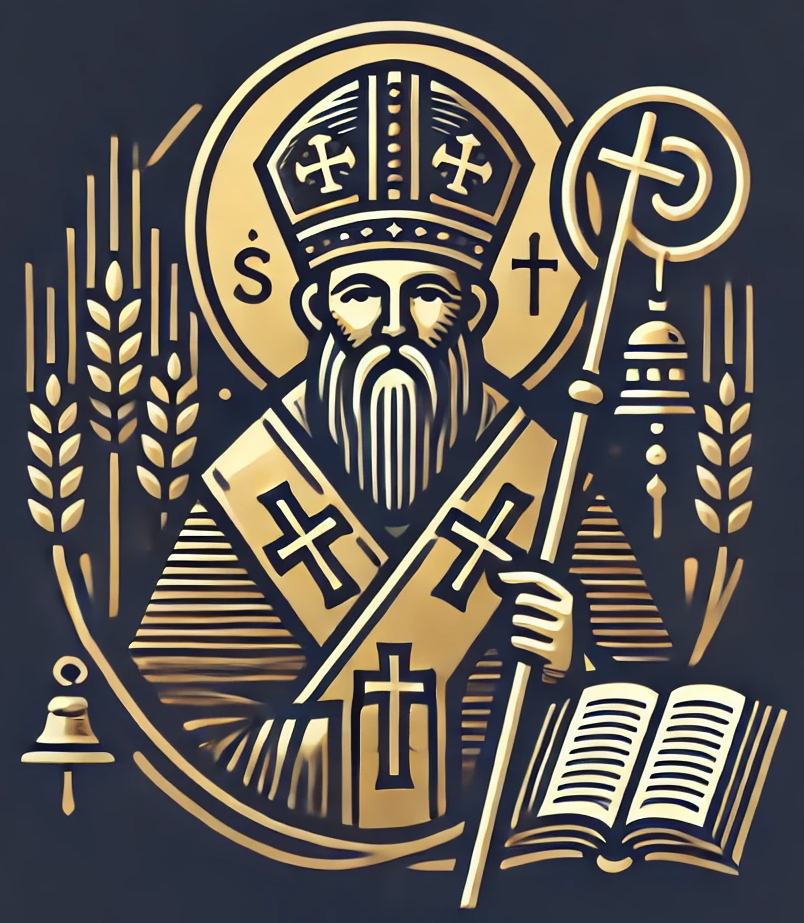
6232614809
Are We Canonical?
The question, “Are you canonical?” often arises when people encounter smaller Orthodox jurisdictions like ours. It’s a valid question, but one that can reflect a misunderstanding of what canonicity truly means in the context of Authentic, Ancient Faith Orthodoxy.
So, to answer plainly: Yes, we are canonical. But canonicity is not determined by institutional affiliations or recognition from a specific patriarchate. Instead, it rests on faithfulness to the Apostolic faith, the proper administration of the sacraments, and adherence to the teachings of the Church Fathers and Ecumenical Councils.
What Does Canonicity Mean to Us?
In the Ancient Faith tradition, canonicity is defined by the following principles:
Faithfulness to the Apostolic Tradition
Valid and proper administration of the sacraments
Adherence to the teachings of the Church Fathers and the Ecumenical Councils
The legitimacy of the Church comes from Christ Himself, not from human institutions. As St. Ignatius of Antioch reminds us:
“Wherever the bishop appears, there let the people be; just as wherever Jesus Christ is, there is the Catholic Church.”
This teaching shows us that the true Church exists wherever the faith is preserved and the sacraments are administered faithfully—regardless of jurisdictional affiliation.
Our Mission: Unity without Compromise
As a diocesan bishop within the Holy Orthodox Catholic Apostolic Church of America, I pray for unity with all Orthodox brethren. However, this unity must never come at the expense of the ancient faith. Our mission is to remain faithful to Christ and His teachings by proclaiming the Gospel, administering the sacraments, and calling people to walk the narrow path of salvation—not to conform to external pressures or political alliances.
St. Athanasius of Alexandria wisely noted:
“Even if Catholics faithful to tradition are reduced to a handful, they are the true Church of Jesus Christ.”
His words challenge us to remain faithful to Christ, even if it means standing apart from larger groups or facing marginalization.
What Do the Councils Say About Canonicity?
The Ecumenical Councils of the first millennium emphasized fidelity to the Apostolic tradition—not submission to a single patriarchate. While the councils acknowledged major centers such as Rome, Constantinople, and Alexandria, they did not teach that a church’s legitimacy depends on alignment with any particular jurisdiction.
Canon 6 of the Council of Nicaea (325 AD) states:
“Let the ancient customs in Egypt, Libya, and Pentapolis prevail, that the bishop of Alexandria have jurisdiction in all these, since the like is customary for the bishop of Rome also.”
This canon shows that each local church that holds to the Apostolic tradition is fully Catholic and Orthodox—regardless of its jurisdictional boundaries. Similarly, Canon 28 of the Council of Chalcedon (451 AD) taught that authority in the Church comes from conciliar governance, not from hierarchical control:
“The Fathers rightly accorded privileges to the throne of old Rome because it was the imperial city; and they accorded equal privileges to the most holy throne of new Rome.”
Our Standard of Canonicity
The true measure of canonicity lies not in external recognition but in faithfulness to Christ and the Apostolic faith. Ask yourself:
Do we proclaim the same Gospel entrusted to the Apostles?
Do we administer the sacraments as Christ instituted them?
Do we uphold the teachings of the Ecumenical Councils and Church Fathers?
Our allegiance is to Christ, the Apostolic faith, and the sacramental life—not to institutional validation or political alliances. As St. Cyprian of Carthage wrote:
“The Church is one, which is spread abroad far and wide into a multitude by an increase of fruitfulness. As there are many rays of the sun, but one light; and many branches of a tree, but one strength based in its tenacious root, so the Church, although spread throughout the whole world, is still one light.”
Avoiding Jurisdictional Exclusivity
To insist that canonicity depends on recognition by a particular patriarchate is to fall into the same error that led to papal primacy in Roman Catholicism. Orthodoxy has rejected centralized authority, affirming instead that canonicity is determined by fidelity to the Apostolic faith and valid sacramental practice.
History demonstrates that even respected patriarchates can fall into error. During the Arian controversy, many bishops embraced heresy. Yet St. Athanasius stood firm in truth, even while exiled, showing that faithfulness—not external recognition—defines the true Church.
Our Invitation: Come and See
We ask that you evaluate us not by our affiliations but by the content of our teachings, the fruits of our ministry, and our faithfulness to the Apostolic tradition.
Ask yourself:
Do we preach the Gospel as the Apostles proclaimed it?
Do our sacraments offer the same grace that nourished the early Church?
Are we calling people to walk the narrow way of salvation? (Matthew 7:14)
The Holy Orthodox Catholic Apostolic Church of America remains committed to the Ancient Faith of Orthodoxy, free from modern innovations and political compromises. We invite you to "come and see" (John 1:39) the fullness of the faith, rooted in Apostolic tradition and nourished by the sacraments.
Conclusion: Yes, We Are Canonical
In Authentic, Ancient Orthodoxy, canonicity is measured by faithfulness to Christ, valid sacramental practice, and adherence to the teachings of the Church Fathers and Ecumenical Councils. Nowhere in the councils of the first millennium is there a requirement to unify under a single patriarchate. The Church’s true unity lies in fidelity to Christ and the Apostolic tradition, not in institutional affiliations.
We are canonical—not because of external recognition—but because of our unwavering commitment to the Apostolic faith, the valid administration of the sacraments, and our adherence to the teachings of the early Church.
If you are searching for the faith of the early Church—unaltered by modern innovations—we invite you to walk with us on the narrow path to salvation.
This is the only measure of canonicity that truly matters.
